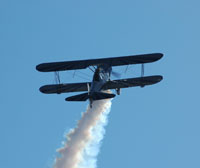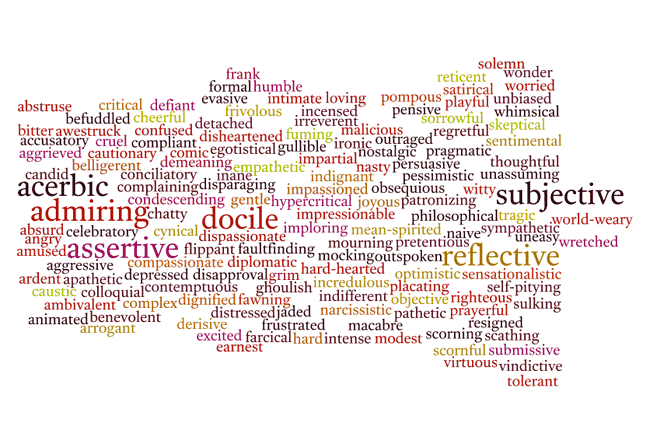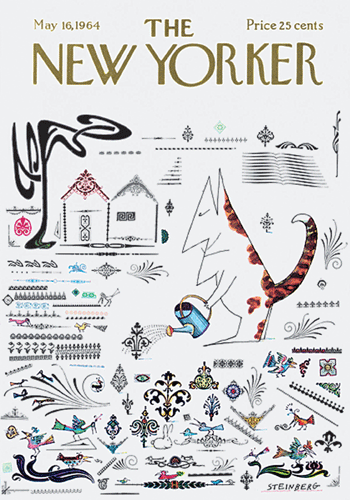Using Diction to Find Tone
Read the following passage from the essay “The Stunt Pilot” by Annie Dillard about a stunt pilot named Dave Rahm. Rahm died in a stunt plane while performing for the King of Jordan in 1976. While reading the passage, look at the words Dillard chooses. See if you can find the words that will help you discover the tone(s) in the excerpt.

The black plane dropped spinning, and flattened out spinning the other way; it began to carve the air into forms that built wildly and musically on each other and never ended. Reluctantly, I started paying attention. Rahm drew high above the world an inexhaustibly glorious line; it piled over our heads in loops and arabesques. It was like a Saul Steinberg fantasy; the plane was the pen. Like Steinberg’s contracting and billowing pen line, the line Rahm spun moved to form new, punning shapes from the edges of the old. Like a Klee line, it smattered the sky with landscapes and systems. The air show announcer hushed. He had been squawking all day, and now he quit. The crowd stilled. Even the children watched dumbstruck as the slow, black biplane buzzed its way around the air. Rahm made beauty with his whole body; it was pure pattern, and you could watch it happen . . . . How did the pilot know where in the air he was? If he got lost, the ground would swat him.
To find tone in a reading passage, we can start by looking at diction. Look at the words the writer chose to use in the paragraph you just read. Look for all of the descriptive words, words that help you form pictures of the stunt pilot’s performance in your head as you read. Also, look for words that might describe the writer’s attitude about her subject or even herself.
The paragraph is full of words that help to describe the tone of the piece. Words like “spinning,” “carve,” “wildly,” “musically,” “inexhaustibly,” and “glorious” help the reader understand the writer’s attitude, or the tone, of the paragraph. Most of these words are positive words that suggest the writer is enjoying the experience of watching the pilot, and some of the words help us imagine the plane as it flies. A particularly interesting word is “swat,” the next to the last word of the paragraph. What images does the word swat bring to your mind?
We might also think about Dillard’s comparison of the plane and its pilot to artists and their work. She writes about Saul Steinberg and Paul Klee, two famous twentieth-century artists.
It was like a Saul Steinberg fantasy; the plane was the pen. Like Steinberg’s contracting and billowing pen line, the line Rahm spun moved to form new, punning shapes from the edges of the old.
Look at the illustration on the left of The New Yorker magazine cover by Saul Steinberg, whose art the writer used to describe the stunt pilot’s performance.
- Look at the tree in the upper left-hand corner. Steinberg used flowing, billowing lines in his drawings. Can you find other billowing lines on the magazine cover?
- What does her comparison to Steinberg say about Dillard's attitude toward the pilot and his performance?
Type in your answer in your notes.
Sample Response:
You might say that the author likes his performance; she thinks it’s beautiful, graceful.
CloseFinally, we can examine the passage’s punctuation and syntax to find clues about its tone. Sometimes a writer will use punctuation to emphasize the tone. For example, an exclamation point might suggest a strong emotion.
A writer might also construct sentences that support the tone. For example, if you look at the sentence that begins, “Like Steinberg’s billowing pen . . .,” you notice that the sentence supports the billowing nature of the line the pilot is making by using phrases on either side of the main clause.
Now that you know some things to look for to discover the tone of a piece of writing, what do you think the tone of this excerpt is? Think about the writer’s word choice. Is it mostly positive or is it negative? If you think the word choices are positive, then you might want to think about a positive word to describe the tone of the excerpt.
If you have trouble in this exercise thinking of the right word to describe the author’s tone, here’s a list of common tone words that might help you come up with just the right one.
Angry Sad Sentimental Afraid Sharp Cold Fanciful Detached Upset Urgent Complimentary Contemptuous Silly Joking Condescending Happy Boring Poignant Sympathetic Confused Apologetic Happy Hollow Childish Humorous Joyful Peaceful Horrific Allusive Mocking Sarcastic Sweet Objective Nostalgic Vexed Vibrant Zealous Tired Frivolous Irrelevant Bitter Audacious Benevolent Dreamy Shocking Seductive Restrained Somber Candid Proud Giddy Pitiful Dramatic Provocative Didactic Lugubrious Admiring
You will notice that the blue words are mostly positive. You might see others that could also be positive in some situations. If you are still unsure about which word to choose, look at the following list, which contains more words that describe tone.

Type in your answer in your notes. When you are finished, check your understanding.
Sample Response:
You might begin with basic words like happy or good or you might use more advanced words like admiring.
Close